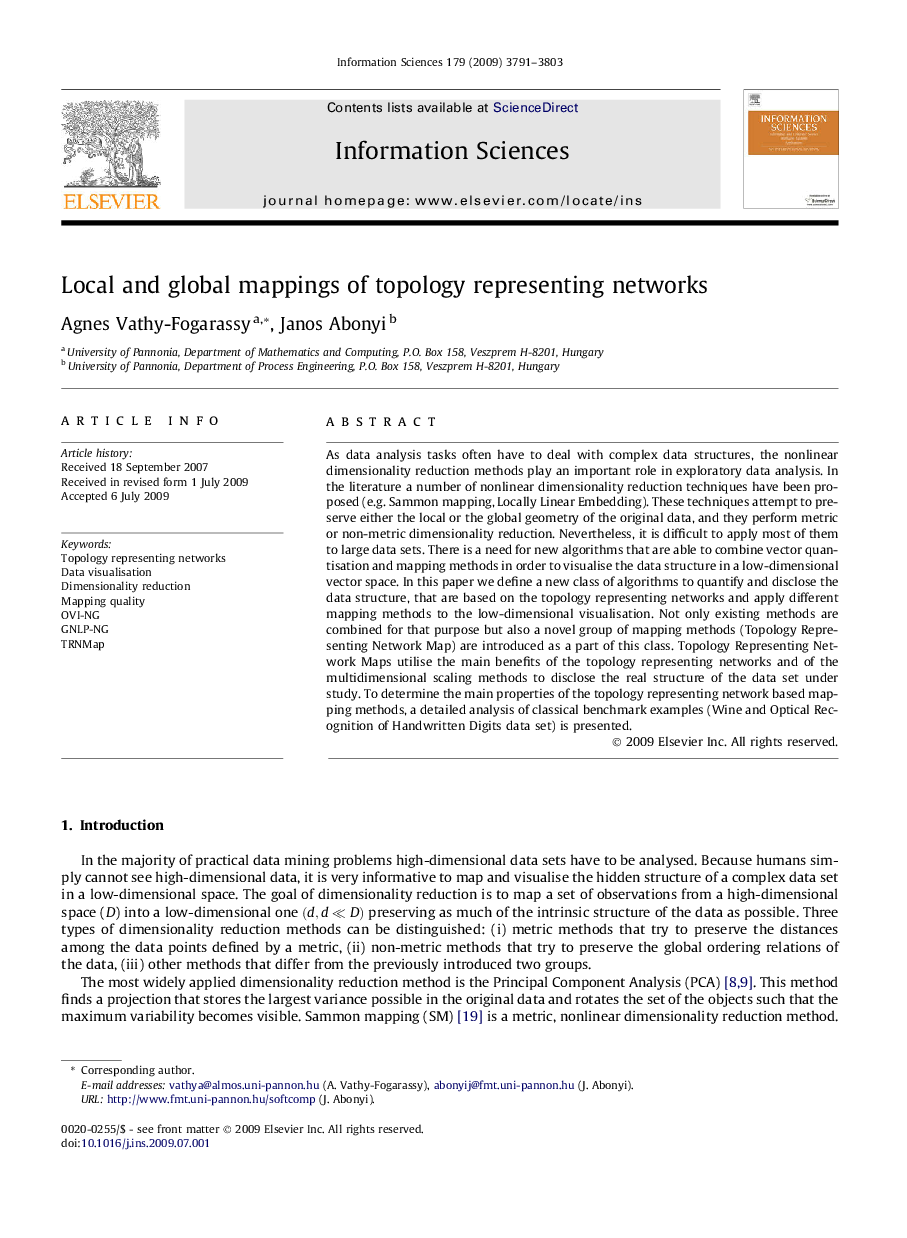| Article ID | Journal | Published Year | Pages | File Type |
|---|---|---|---|---|
| 394625 | Information Sciences | 2009 | 13 Pages |
As data analysis tasks often have to deal with complex data structures, the nonlinear dimensionality reduction methods play an important role in exploratory data analysis. In the literature a number of nonlinear dimensionality reduction techniques have been proposed (e.g. Sammon mapping, Locally Linear Embedding). These techniques attempt to preserve either the local or the global geometry of the original data, and they perform metric or non-metric dimensionality reduction. Nevertheless, it is difficult to apply most of them to large data sets. There is a need for new algorithms that are able to combine vector quantisation and mapping methods in order to visualise the data structure in a low-dimensional vector space. In this paper we define a new class of algorithms to quantify and disclose the data structure, that are based on the topology representing networks and apply different mapping methods to the low-dimensional visualisation. Not only existing methods are combined for that purpose but also a novel group of mapping methods (Topology Representing Network Map) are introduced as a part of this class. Topology Representing Network Maps utilise the main benefits of the topology representing networks and of the multidimensional scaling methods to disclose the real structure of the data set under study. To determine the main properties of the topology representing network based mapping methods, a detailed analysis of classical benchmark examples (Wine and Optical Recognition of Handwritten Digits data set) is presented.
